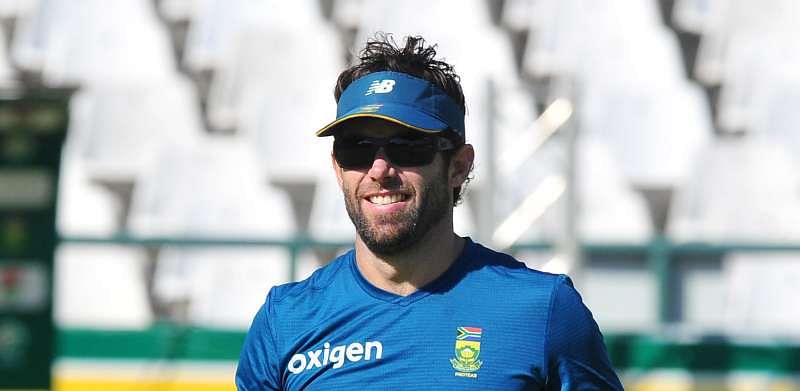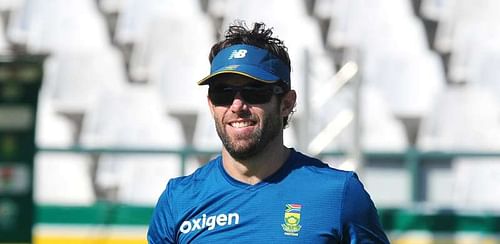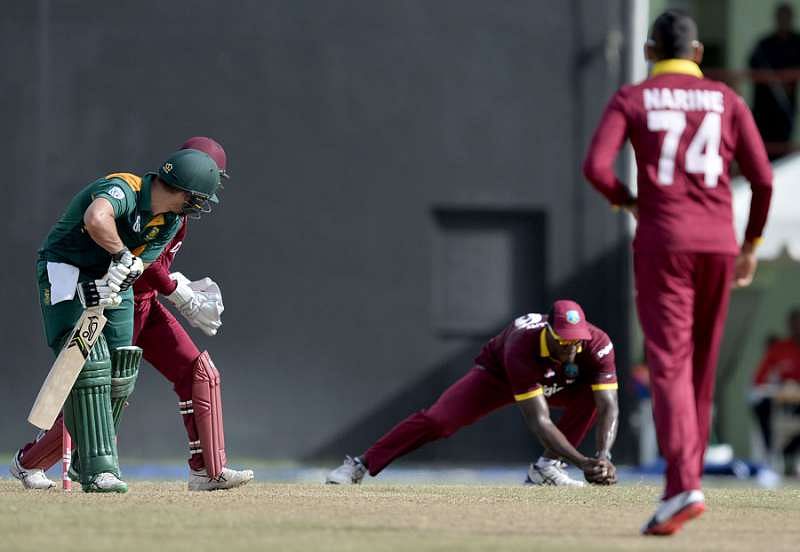
South Africans must learn to rotate strike on slow pitches, says Neil McKenzie
South Africa's batting consultant Neil McKenzie has summoned his batting brigade to concentrate more on rotating strike on the Guyana pitch ahead of their match against Australia in the tri-series. South Africa take on the world champions tonight, after suffering a defeat to hosts West Indies four days ago.
Australia, in their last match, cruised to victory against the West Indies with six wickets to spare. Evidently South Africa need to score much more than the 188 runs they posted last time.
South Africa was off to a good start as they scored 47 runs off 8 overs, but the rate slowed down to 4 runs/over as Narine’s spell led to fall of quick wickets at regular intervals. While Pollard managed to flip over the boundary six times, South Africa did not hit a single six. Their innings showed a lack of strike rotation as they faced 152 dot balls.
"It comes down to having a thick skin when you are batting. It might mean soaking up a few balls but trusting you technique and your game plan to get you out and get you to a decent strike rate," McKenzie said in a press conference. "We will be looking to try and rotate the strike a little bit more, hit with the spin, utilise the space and run hard because boundaries aren't that easy to come by."
Rilee Rossouw, South Africa's top run-getter in the first match, described the pitch as "a subcontinental one" while Australian skipper Steve Smith thinks the surface might be good to bat first. McKenzie instead, has advocated a conservative start, similar to what South Africa had in the first match.
"It's easier to set a platform and really hit at the death, going for your big shots later on rather than upfront," McKenzie continued. "The skilled shots over cover or midwicket are not that easy on a deck where it's really slow and there is some purchase. You've got to try and find your ones; make sure you can get to the other side. You've got to take calculated risks at certain times but it all comes down to rotating your strike."
McKenzie has also stated that his batsmen will try to take on the fast bowlers as much as possible, to make batting a bit easier when the spinners are brought into the attack. "If you've taken the seamers for quite a few runs, the pressure is off when (you) face the spin," he stated. "It's going to be another grind on Tuesday and boys are looking forward to it."
Following South Africa’s dreadful Test series in India last November and incompetent performance at this year’s World Twenty20, their reputation of being a major force has taken a hit but Rossouw is still confident about their chances. "We've got a fairly good idea what's happening now. We know what to expect," he said.
With focus all over the batting, South Africa’s bowling attack had not even praised for their effort. The bowling attack consisting of two spinners and three pacers performed ideally even when there was nothing to defend on the board. All the pacers went for less than 4 runs/over while the spinners claimed the 6 wickets.
Their effort leaves no space for Morkel, Parnell or Shamsi but the batting consultant isn’t complaining.
"Abbott and KG started really well, hit some great areas and asked a lot of questions upfront," McKenzie stated. "The seamers will be the ones that will keep it a bit tighter. They won't get the wicket count that you normally get in Aus or SA but they are vitally important. They've got to hit off stump, be wicket to wicket, not give any width on these types of wickets and force the batters hand to try and come after the spinners."

